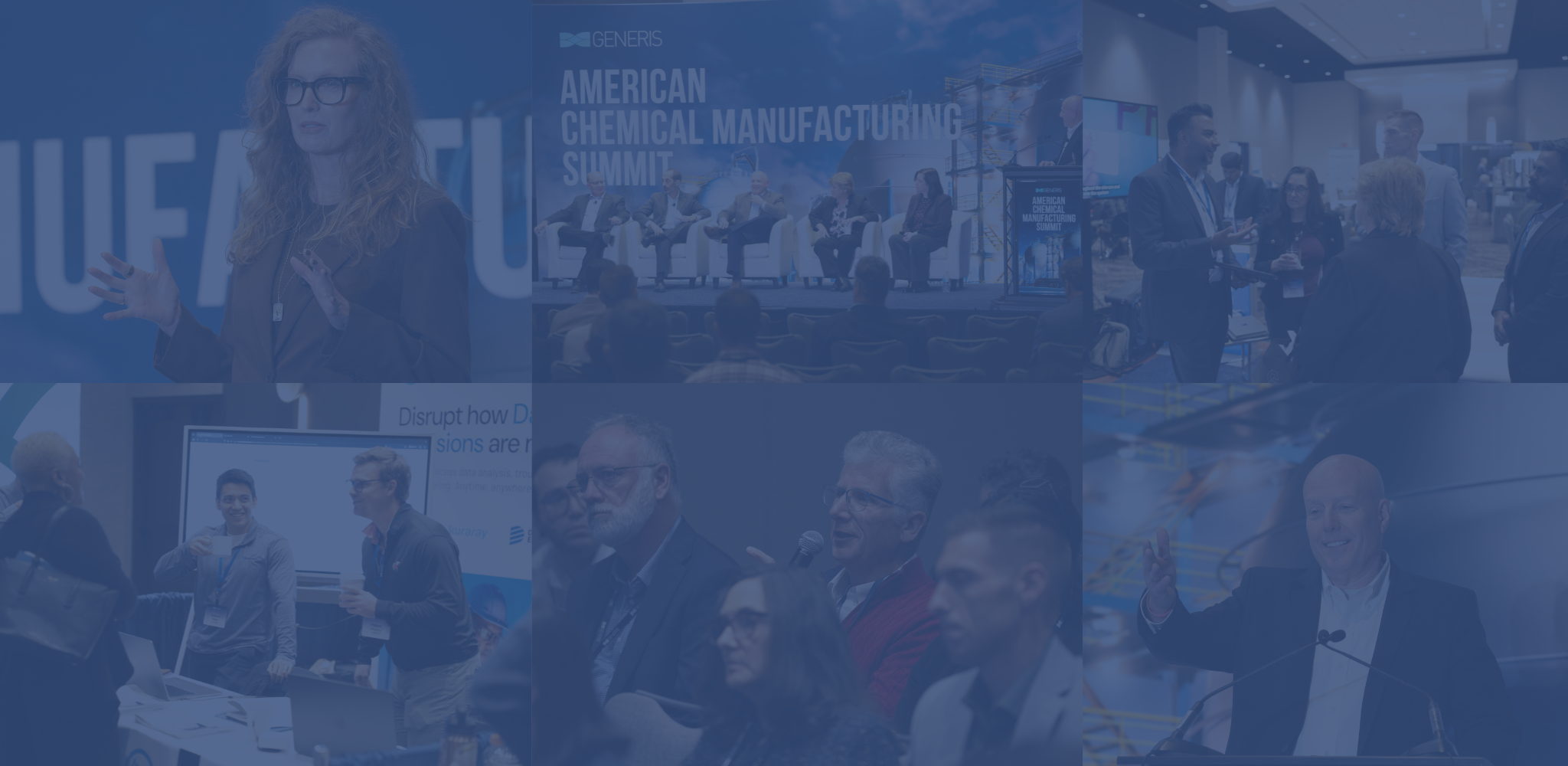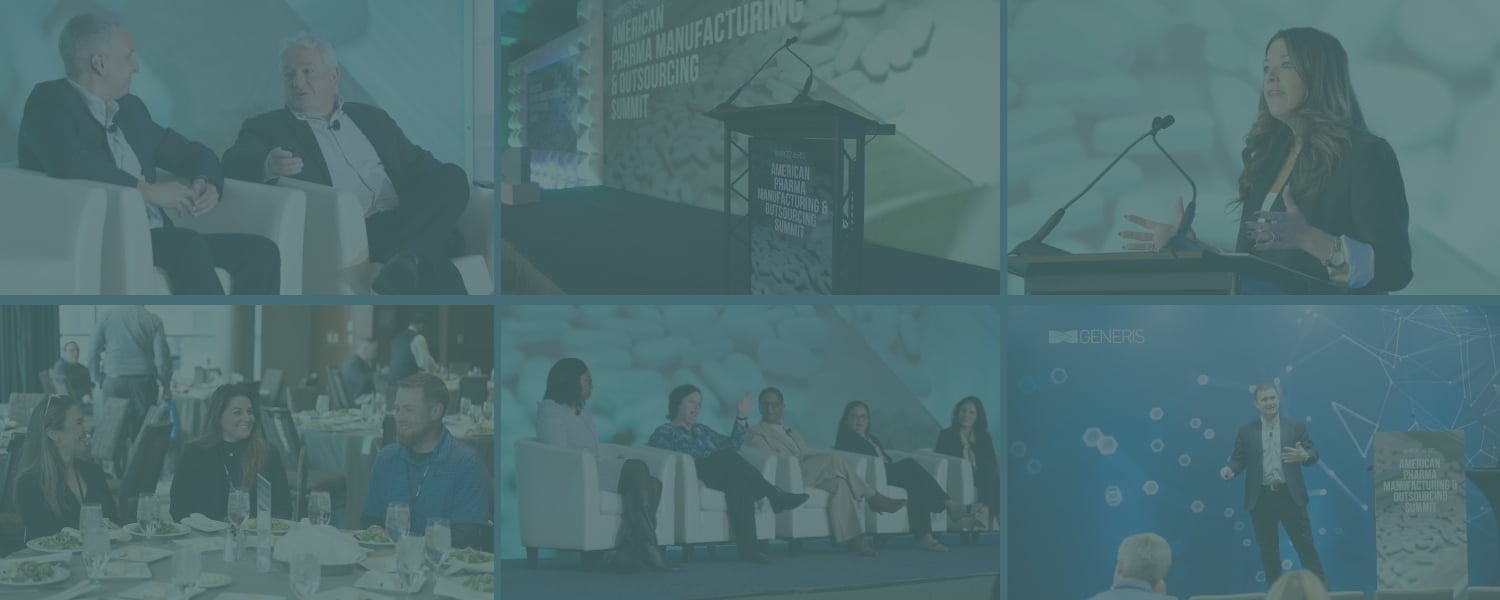In this Speaker Spotlight, Nicole Wagner, Ph.D., President and CEO of LambdaVision, gives a preview of the topics she will delve into at the European Biomanufacturing Summit, as well as her journey to biomanufacturing and becoming the CEO and President of LambdaVision. Dive into a preview of Nicole's upcoming panel discussion, "Elevating Quality Standards and Expectations in Biomanufacturing."
.png?width=410&height=410&name=Nicole-Wagner-LambdaVision%20(1).png) My name is Nicole Wagner, and I am the President and CEO of LambdaVision. LambdaVision is a spin-off company from the University of Connecticut, focused on developing a protein-based artificial retina to restore vision for the millions of people blinded by end-stage retinal degenerative diseases, such as retinitis pigmentosa—the leading cause of heritable blindness—and age-related macular degeneration, the leading cause of blindness in people 55 and older.
My name is Nicole Wagner, and I am the President and CEO of LambdaVision. LambdaVision is a spin-off company from the University of Connecticut, focused on developing a protein-based artificial retina to restore vision for the millions of people blinded by end-stage retinal degenerative diseases, such as retinitis pigmentosa—the leading cause of heritable blindness—and age-related macular degeneration, the leading cause of blindness in people 55 and older.
I hold a Ph.D. in molecular biology and have worked extensively on optimizing light-activated proteins, including bacteriorhodopsin, which we use in our artificial retina. My work has spanned various applications such as chemical sensors, photovoltaics, and optogenetics—a field that emerged as a way to restore neural function using light-activated proteins. This led to the founding of our company.
What sets our current work apart is that we are exploring the manufacturing of this artificial retina in a microgravity environment, specifically on the International Space Station (ISS). People often ask how a vision company ended up conducting research in space, and it's an interesting story. In 2016, we participated in MassChallenge, an accelerator program in the Boston area that helps early-stage companies commercialize their technologies. One of the sponsors at that time was ISS National Labs in collaboration with Boeing.
During the program, I attended a presentation about the ISS, expecting to hear about the moon and Mars. Instead, I learned about how the ISS is benefiting people on Earth today, particularly through bio-printing and other bio-applications. This sparked an idea: perhaps microgravity could enhance the manufacturing process of our artificial retina.
Currently, we use a method called electrostatic layer-by-layer deposition. In a standard Earth-based environment, factors like sedimentation, evaporation, and surface tension can impact the process, leading to less homogeneity in the protein binding. This is particularly problematic because we coat our artificial retina with over 200 layers, meaning any imperfections early on get magnified. While it's not impossible to do this on Earth, it's inefficient and often results in significant waste.
In microgravity, however, we achieve a more ordered array, better binding, and an overall superior product. Since our first mission in 2018, we've flown nine missions to the ISS and are planning many more in the coming years. I vividly remember our first launch on SpaceX 16 in late 2018, an unforgettable experience at Kennedy Space Center, where I felt the vibrations and witnessed our product being launched into space. It was a surreal, bucket-list moment I never expected.
As one of the first companies to explore what good manufacturing practices might look like in space, we are pioneering a new frontier. There's increasing recognition of the benefits of microgravity in drug and therapeutic development. For example, the Harvard Business Review recently published an article suggesting that every pharma company should have a space strategy. Crystals grow better in space; companies like Merck and Bristol-Myers Squibb have already leveraged microgravity for their products. As space becomes more accessible and less science fiction, it presents a remarkable opportunity for innovation.
In addition to my role at LambdaVision, I also serve as a committee chair for the International Space Station.
Could you tell us more about your personal career journey in the biomanufacturing space?
A lot of serendipity. So, as I mentioned earlier, my background is in molecular biology. I worked on optimizing proteins for device architectures. Back in 2016, when we were part of MassChallenge, I had zero idea that I would be spending so much time thinking about the work we're doing in space right now. I think, for me, it was just about being open to new ideas.
You can learn anything. That's a really cool part about being a CEO—or being anyone, right? There's an opportunity to learn and develop. For me, the other piece of it is that, being a small business, we have the opportunity to be a little more nimble than some of the larger public companies that have more layers to go through. We have the opportunity to be creative and think about ways that can overall benefit our product. That led us to where we are today. I spend a lot of my time thinking about space. Actually, one of our biggest funders has been NASA. Up until this point, we've received close to $12 to $14 million from NASA to support this technology and continue to develop it. I really think the exciting part is that we're paving the way for other technologies looking to do research in space as well.

What are the most critical components and standards that define quality in biomanufacturing today, and how are these expected to evolve in the next five years?
When I think about quality and the standards necessary for manufacturing any product, especially as it relates to space, my approach is that we don't need to reinvent the wheel. There are certain standards that apply regardless of where your manufacturing takes place, whether it's in space or on Earth. These include ensuring quality control, quality assurance, a method to measure the function and safety of your technology, product validation, and qualification of your end product. These are all essential, no matter where your product is ultimately manufactured.
One important aspect to consider when manufacturing, particularly in space, is risk assessment. What are the risks associated with doing things in space? What challenges might arise? And how do these compare to the processes you would use on Earth? When describing space research, I often compare it to the concerns companies might have about manufacturing in places like California, China, or Singapore. For me, space is actually a lot closer—just 250 miles up in the sky. While it may seem far-fetched to some, the only difference is that this laboratory operates in microgravity. I challenge people to think of it not as science fiction, but as a viable and logical extension of what we do on Earth. If you have the right quality controls, chain of custody, and monitoring in place, there's no significant difference between doing this in space versus anywhere else.
The biggest challenges, in my opinion, are twofold. First, there's the need to match the speed of commercialization in the industry. There are limited launch opportunities and limited chances to return your product. So, how do you continue to iterate and move quickly in a microgravity environment? That has been a bit of a challenge.
When you're trying to manufacture something in space, it's different from doing it on a benchtop, where you can try five times and fail quickly. In space, each experiment is almost like a Hail Mary—you have one opportunity, so you want to collect as much data as possible from that single experiment. The advantage we have in being able to fly multiple times is that we can plan our experiments and run them in parallel, allowing us to collect small bits of data that collectively advance the overall program. However, for many, the hardest part is the lack of experience in space. It's new to them. How do you take an Earth-based experiment and ensure it meets the requirements necessary for a microgravity environment?
Safety is a major concern—you don't want things floating around uncontrollably. You need to ensure that you have a way to measure quality and monitor it throughout the process. You also need to make sure your equipment reaches the space station and that you're monitoring environmental factors such as temperature, humidity, and radiation, all of which are crucial in a microgravity environment. Utilizing the unique capabilities of microgravity is similar to using environments like underwater or pressurized chambers on Earth—these don't seem unusual to most people. The challenge with microgravity is that it's difficult to recreate sustained microgravity for long periods on Earth. This leads to the common question: Can't you just simulate that on Earth? The answer is that you can, but only for short periods. Manufacturing an artificial retina, for example, takes about a week. To achieve a full week of microgravity, you really need to go to the ISS or use one of the other platforms.
Utilizing the unique capabilities of microgravity is similar to using environments like underwater or pressurized chambers on Earth—these don't seem unusual to most people. The challenge with microgravity is that it's difficult to recreate sustained microgravity for long periods on Earth. This leads to the common question: Can't you just simulate that on Earth? The answer is that you can, but only for short periods. Manufacturing an artificial retina, for example, takes about a week. To achieve a full week of microgravity, you really need to go to the ISS or use one of the other platforms.
Many people want to know why we're doing this in microgravity. What's the benefit? Is it necessary? The sustained microgravity environment offers unique advantages and presents challenges, particularly in maintaining quality. But at the end of the day, this isn't a crazy idea. The same principles you apply on the ground are applicable here; you just need to understand that this is a different environment. So, from a regulatory standpoint, there's no need to reinvent the wheel.
"While it may seem far-fetched to some, the only difference is that this laboratory operates in microgravity. I challenge people to think of it not as science fiction, but as a viable and logical extension of what we do on Earth. If you have the right quality controls, chain of custody, and monitoring in place, there's no significant difference between doing this in space versus anywhere else."
What best practices have you implemented to optimize tech transfer processes, ensuring consistency and quality?
Sure, so we're in the process of transferring our work. To take a step back, we manufacture the protein on Earth, purify it, and then deposit it onto our scaffold. The protein manufacturing and purification are done on Earth, while the deposition onto the scaffold is conducted in a microgravity environment. The tech transfer on the protein side is more traditional and familiar to most people; we're outsourcing the protein production to a GMP facility.
In terms of the transfer, it's crucial to ensure we have the right expertise. I'm not a regulatory expert, so the first thing we did was engage with professionals who have that expertise to oversee the entire process. Being clear about our goals and what we're trying to accomplish is vital. It's important to plan thoroughly and communicate our ideas effectively. Another key aspect is the training component, whether it's done on Earth or in space. It's essential to document everything meticulously so that the person on the receiving end fully understands the process—this ties back to the importance of clear communication.
One challenge we've faced, particularly in engineering, is ensuring that the people on the other end—especially in space—understand the biological implications of small engineering changes. These engineers are often not familiar with biology, so it's critical that they understand how what seems like a minor change from an engineering standpoint can have significant consequences in a bioprocess. Speaking the same language, providing proper training, and documenting every detail is crucial to this process, which emphasizes the importance of good documentation.
Consistency is also key. Once you can effectively communicate your needs, it's important to continue articulating them clearly, documenting everything, and maintaining traceability. I can't stress enough the importance of writing everything down. This allows us to pinpoint what, where, and when something went wrong in the process, which is especially crucial in the R&D phase, where we are now. We're focused on learning from our mistakes and documenting everything so that others can learn from us as well. Ultimately, having a comprehensive repository of data is essential to demonstrating the quality, reproducibility, and consistency of our product, which is exactly what regulatory bodies want to see.
How do you see AI affecting the biomanufacturing industry, specifically in quality management?
For us, what's really exciting about the current advancements in AI is how it's helping us analyze vast amounts of data. In the context of space, AI plays a crucial role in predictive analytics—helping us anticipate what to expect in a microgravity environment. By analyzing the data we've collected, we can identify trends that might impact not only our work but also other companies looking to operate in space. Leveraging historical data to detect defects or deviations in product quality is going to be incredibly important.
AI is also proving valuable in enhancing quality control, which is critical for our operations. At LambdaVision, we're particularly interested in using AI to help make real-time decisions based on the data we collect, allowing us to identify and mitigate risks as we move forward. If we observe certain trends, can we make necessary tweaks and adjustments from Earth in a microgravity environment? Understanding this will be beneficial not only for us but also for other companies looking to undertake similar work in space.

What customer-focused strategies have seemed to meet and exceed quality expectations?
When it comes to looking at customers, it's always about understanding who your end user is—who will be receiving the product or who you will be working with. For us, that might be surgeons implanting these into patients. It's crucial to engage with them early to understand their needs and what they are looking for in a product. I think that's really important. Many people can create products, but they may not be addressing what the end user or customer truly needs. At the end of the day, once you've engaged with those customers or end users, it's essential to ensure you're bringing a safe and effective product to market.
So, early engagement and consistency are key. Make sure your team understands what your customers are looking for and consider any necessary personalization. But if I were to emphasize one thing, it's the importance of engaging early and truly understanding what your end users need. You don't want to create a product that they don't need, or that doesn't fit their requirements—like a surgeon not being able to insert it properly. None of that will help you in the end.
What are you looking forward to the most at this year's European Biomanufacturing Summit?
This is my first biomanufacturing summit in Europe, and I'm excited to learn from others and engage with the various stakeholders. Additionally, I see myself as a champion for raising awareness about space-based manufacturing. While most people are familiar with how we're currently doing things, I believe there's a lot of opportunity and excitement around what's happening in low Earth orbit. I want to share what's going on, offer my insights and stories, and hope that others can learn from my experiences as well.
We are grateful to Nicole Wagner for the profound insights she shared in this blog post. Her expert perspectives and work with biologics in space will greatly enhance our discussions at the European Biomanufacturing Summit. We look forward to her session, "Elevating Quality Standards and Expectations in Biomanufacturing," which will take place on September 10-11, 2024, in Berlin, Germany. Thank you, Nicole, for your collaboration and valuable input.
%20(1).png?width=773&height=112&name=Generis%20Logo%20full%20Colour%20(Large)%20(1).png)



